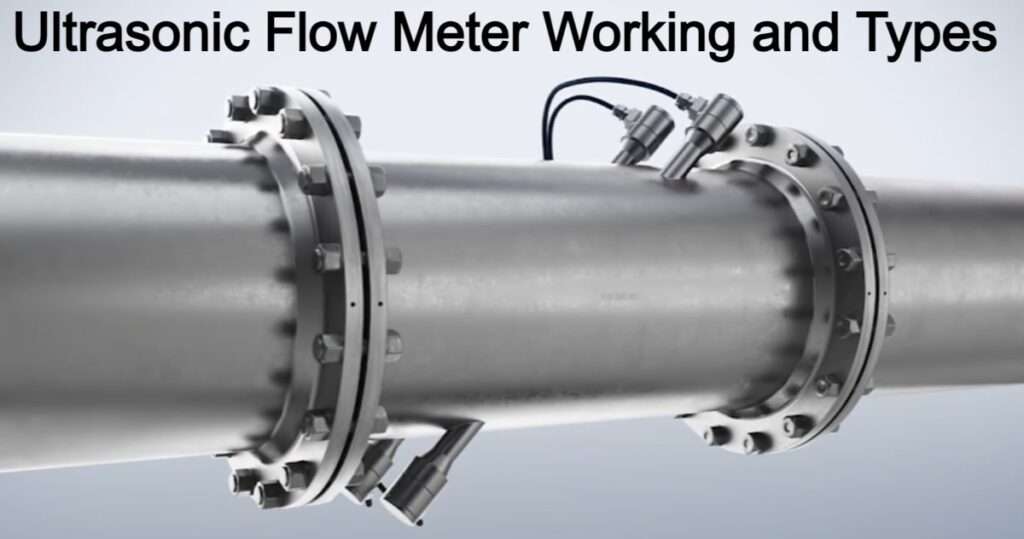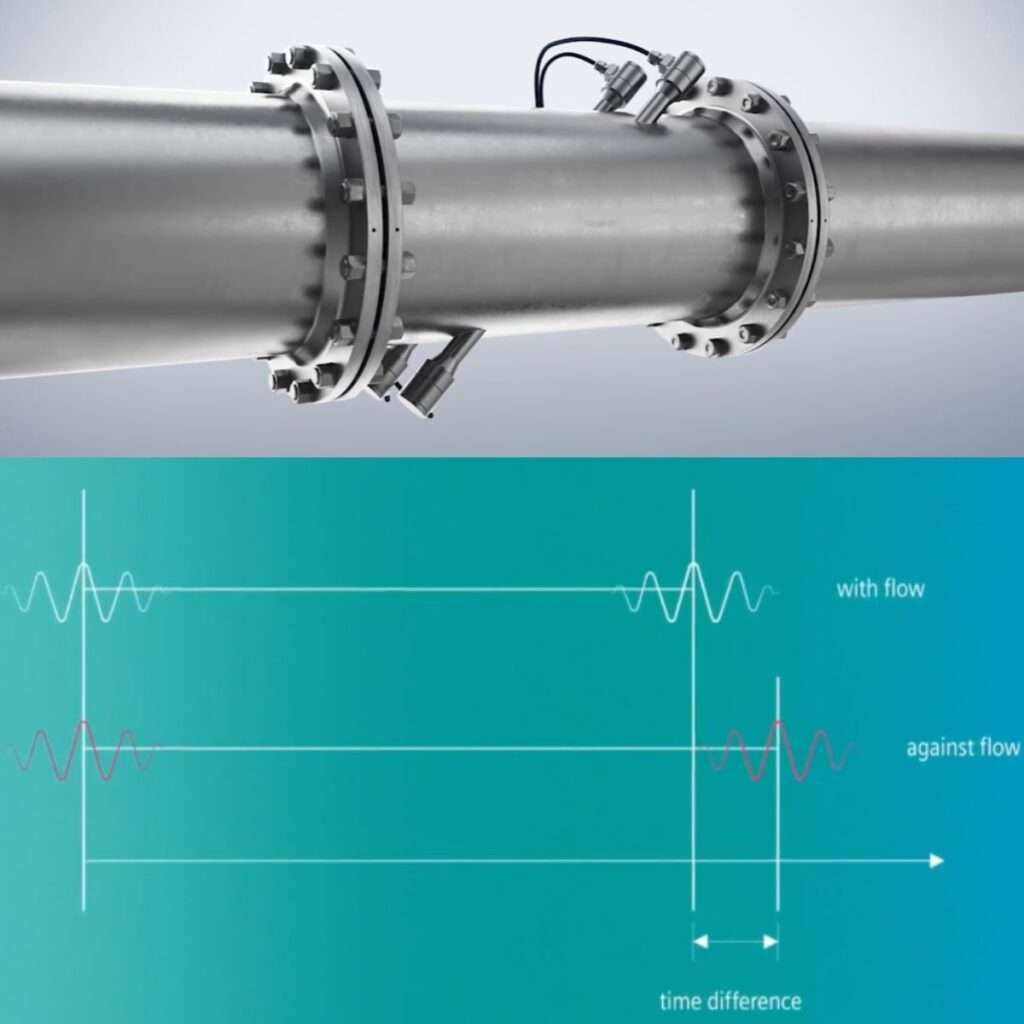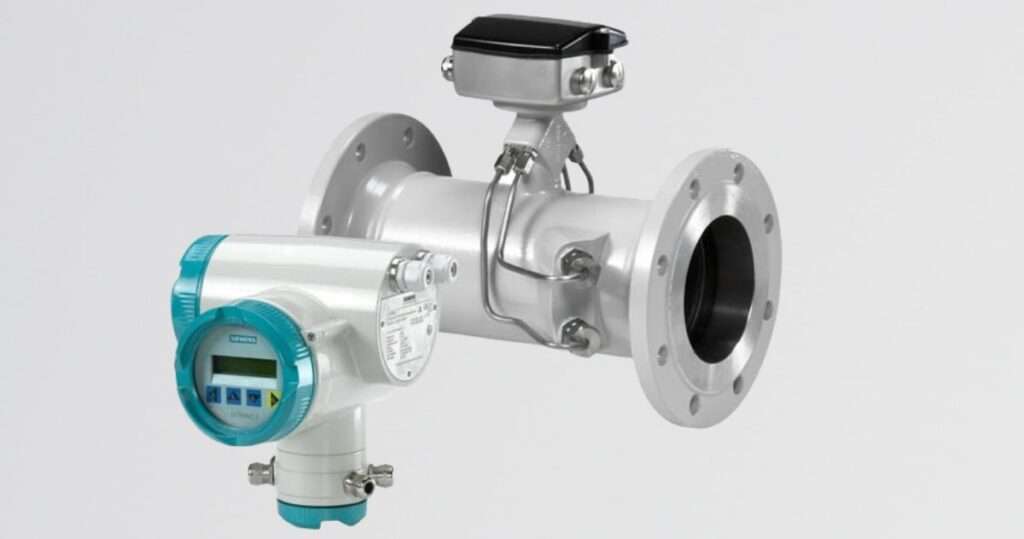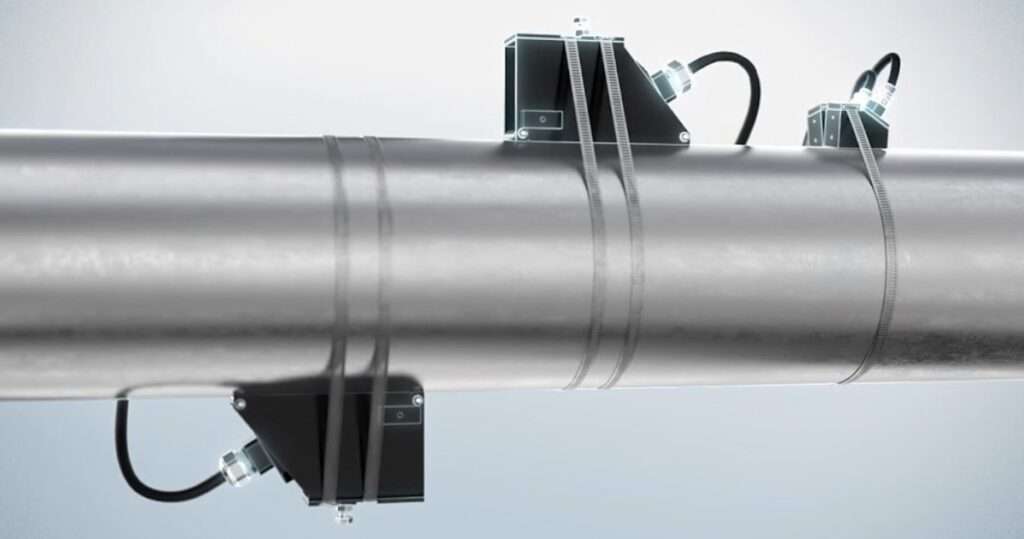Ultrasonic Flow Meter Working and Types

Ultrasonic Flow Meter Working and Types:- Some animals use ultrasound to navigate and communicate. Frequencies which human cannot hear is called ultrasonic sound. The ultrasonic frequency is 20,000+ Hz. Animals like Bats, Dolphins, Rats, Whales, and some birds use ultrasound to navigate and communicate. Bats use the echolocation ultrasound technique to find insects for food and to navigate through dark caves. Dolphins and Whales use the echolocation ultrasound technique to find their mates and navigate to them. We will use a similar technique to measure flow rate, density, and viscosity of flowing fluid.
Ultrasonic flow meters are of two types 1) Transit time and 2) Doppler effect. We will discuss both types in detail.
Ultrasonic flow meter working principle
The basic principle behind the meter is that the transmitter will emit ultrasonic waves and on the opposite side receiver will receive that wave. This process will happen in both directions with the flow and against the flow. The time shift between the two paths will show the volumetric flow rate of the fluid. When there is no flow condition prevails, the signal will take the same time in both directions.
Transit time flow meter
Transit time flow meter is used when fluid does not contain any solids. In this meter, two or more transmitters and receivers are attached to the pipe. The transmitter will emit the ultrasonic wave and the receiver will receive that wave. Due to the flow of fluid, the wave moving in the direction of flow will reach sooner than the wave moving against the flow.

The delay in time is directly proportional to the flow of fluid. As the sensors don’t have moving parts maintenance costs will be low and measurement will be accurate.
Inline flow meter
The Inline Flow meter will measure very accurately because it is directly in contact with the fluid.

Clamp on flow meter
The Clamp-on Flowmeter is used when we need no interaction of fluid with the flowmeter. This meter will measure flowrate with little less accuracy because it is mounted outside the pipe. Before buying a clamp-on meter we need to know about pipe wall MOC and thickness.

Doppler effect flow Meter
The Doppler Effect Flow Meter is used when fluid contains particles or bubbles. Doppler effect is nothing but when the ambulance passes through the road siren sound will be high when the ambulance is near and the sound vanishes as it goes away. This happens even the siren sound remains the same. This is called the Doppler effect. The same effect is used in the doppler effect flow meter. It contains only one sensor which has both transmitter and receiver. The transmitter will emit the ultrasound, due to particles in the fluid ultrasound wave will reflect to the sensor and the receiver will receive the wave but the frequency will be changed. The frequency shift is directly proportional to the flow rate of the fluid.
Combined flow meter
The Combined Flow Meter is used to achieve maximum accuracy in flow measurement.
Advantages:
- Very accurate
- No contact needed
- Low maintenance
- Can be used for small to large pipes
Disadvantages:
- High initial cost
- Clamp-on type meter will limit due to wall thickness and MOC































